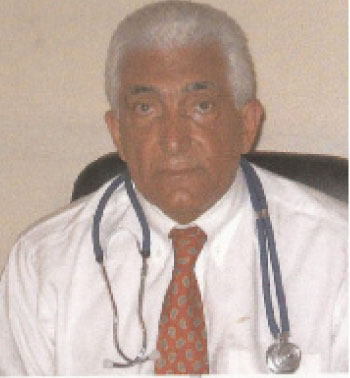
24 April 2014 -- On World Malaria Day (25 April), WHO is launching a manual to help countries to assess the technical, operational and financial feasibility of moving towards malaria elimination. The new guide, “From malaria control to malaria elimination: a manual for elimination scenario planning”, will provide countries with a framework to assess different scenarios and timelines for moving towards elimination, depending on programme coverage and funding availability.
Key facts
Malaria is a life-threatening disease caused by parasites that are transmitted to people through the bites of infected mosquitoes.
In 2012, malaria caused an estimated 627 000 deaths (with an uncertainty range of 473 000 to 789 000), mostly among African children.
Malaria is preventable and curable.
Increased malaria prevention and control measures are dramatically reducing the malaria burden in many places.
Non-immune travellers from malaria-free areas are very vulnerable to the disease when they get infected.
According to the latest estimates, released in December 2013, there were about 207 million cases of malaria in 2012 (with an uncertainty range of 135 million to 287 million) and an estimated 627 000 deaths (with an uncertainty range of 473 000 to 789 000). Malaria mortality rates have fallen by 42% globally since 2000 and by 49% in the WHO African Region.
Most deaths occur among children living in Africa where a child dies every minute from malaria. Malaria mortality rates among children in Africa have been reduced by an estimated 54% since 2000.
Malaria is caused by Plasmodium parasites. The parasites are spread to people through the bites of infected Anopheles mosquitoes, called “malaria vectors”, which bite mainly between dusk and dawn.
There are four parasite species that cause malaria in humans:
Plasmodium falciparum
Plasmodium vivax
Plasmodium malariae
Plasmodium ovale.
Plasmodium falciparum and Plasmodium vivax are the most common. Plasmodium falciparum is the most deadly.
In recent years, some human cases of malaria have also occurred with Plasmodium knowlesi – a species that causes malaria among monkeys and occurs in certain forested areas of South-East Asia.
Transmission
Malaria is transmitted exclusively through the bites of Anopheles mosquitoes. The intensity of transmission depends on factors related to the parasite, the vector, the human host, and the environment.
About 20 different Anopheles species are locally important around the world. All of the important vector species bite at night. Anopheles mosquitoes breed in water and each species has its own breeding preference; for example some prefer shallow collections of fresh water, such as puddles, rice fields, and hoof prints. Transmission is more intense in places where the mosquito lifespan is longer (so that the parasite has time to complete its development inside the mosquito) and where it prefers to bite humans rather than other animals. For example, the long lifespan and strong human-biting habit of the African vector species is the main reason why about 90% of the world’s malaria deaths are in Africa.
Transmission also depends on climatic conditions that may affect the number and survival of mosquitoes, such as rainfall patterns, temperature and humidity. In many places, transmission is seasonal, with the peak during and just after the rainy season. Malaria epidemics can occur when climate and other conditions suddenly favour transmission in areas where people have little or no immunity to malaria. They can also occur when people with low immunity move into areas with intense malaria transmission, for instance to find work, or as refugees.
Human immunity is another important factor, especially among adults in areas of moderate or intense transmission conditions. Partial immunity is developed over years of exposure, and while it never provides complete protection, it does reduce the risk that malaria infection will cause severe disease. For this reason, most malaria deaths in Africa occur in young children, whereas in areas with less transmission and low immunity, all age groups are at risk.
Symptoms
Malaria is an acute febrile illness. In a non-immune individual, symptoms appear seven days or more (usually 10–15 days) after the infective mosquito bite. The first symptoms – fever, headache, chills and vomiting – may be mild and difficult to recognize as malaria. If not treated within 24 hours, P. falciparum malaria can progress to severe illness often leading to death. Children with severe malaria frequently develop one or more of the following symptoms: severe anaemia, respiratory distress in relation to metabolic acidosis, or cerebral malaria. In adults, multi-organ involvement is also frequent. In malaria endemic areas, persons may develop partial immunity, allowing asymptomatic infections to occur.
For both P. vivax and P. ovale, clinical relapses may occur weeks to months after the first infection, even if the patient has left the malarious area. These new episodes arise from dormant liver forms known as hypnozoites (absent in P. falciparum and P. malariae); special treatment – targeted at these liver stages – is required for a complete cure.
Who is at risk?
Approximately half of the world’s population is at risk of malaria. Most malaria cases and deaths occur in sub-Saharan Africa. However, Asia, Latin America, and to a lesser extent the Middle East and parts of Europe are also affected. In 2013, 97 countries and territories had ongoing malaria transmission.
Specific population risk groups include:
young children in stable transmission areas who have not yet developed protective immunity against the most severe forms of the disease;
non-immune pregnant women as malaria causes high rates of miscarriage and can lead to maternal death;
Semi-immune pregnant women in areas of high transmission. Malaria can result in miscarriage and low birth weight, especially during first and second pregnancies;
Semi-immune HIV-infected pregnant women in stable transmission areas, during all pregnancies. Women with malaria infection of the placenta also have a higher risk of passing HIV infection to their new-borns; people with HIV/AIDS; international travellers from non-endemic areas because they lack immunity; immigrants from endemic areas and their children living in non-endemic areas and returning to their home countries to visit friends and relatives are similarly at risk because of waning or absent immunity.
Diagnosis and treatment
Early diagnosis and treatment of malaria reduces disease and prevents deaths. It also contributes to reducing malaria transmission.
The best available treatment, particularly for P. falciparum malaria, is artemisinin-based combination therapy (ACT).
WHO recommends that all cases of suspected malaria be confirmed using parasite-based diagnostic testing (either microscopy or rapid diagnostic test) before administering treatment. Results of parasitological confirmation can be available in 15 minutes or less. Treatment solely on the basis of symptoms should only be considered when a parasitological diagnosis is not possible. More detailed recommendations are available in the Guidelines for the treatment of malaria (second edition).
Prevention
Vector control is the main way to reduce malaria transmission at the community level. It is the only intervention that can reduce malaria transmission from very high levels to close to zero.
For individuals, personal protection against mosquito bites represents the first line of defence for malaria prevention.
Two forms of vector control are effective in a wide range of circumstances.
Insecticide-treated mosquito nets (ITNs)`
Long-lasting insecticidal nets (LLINs) are the preferred form of ITNs for public health distribution programmes. WHO recommends coverage for all at-risk persons; and in most settings. The most cost effective way to achieve this is through provision of free LLINs, so that everyone sleeps under a LLIN every night.
Indoor spraying with residual insecticides
Indoor residual spraying (IRS) with insecticides is a powerful way to rapidly reduce malaria transmission. Its full potential is realized when at least 80% of houses in targeted areas are sprayed. Indoor spraying is effective for 3–6 months, depending on the insecticide used and the type of surface on which it is sprayed. DDT can be effective for 9–12 months in some cases. Longer-lasting forms of existing IRS insecticides, as well as new classes of insecticides for use in IRS programmes, are under development.
In order to ensure a timely and coordinated global response to the threat of insecticide resistance, WHO has worked with a wide range of stakeholders to develop the Global Plan for Insecticide Resistance Management in malaria vectors (GPIRM), which was released in May 2012. The GPIRM puts forward a five-pillar strategy calling on the global malaria community to:
plan and implement insecticide resistance management strategies in malaria-endemic countries;
ensure proper and timely entomological and resistance monitoring, and effective data management;
develop new and innovative vector control tools;
fill gaps in knowledge on mechanisms of insecticide resistance and the impact of current insecticide resistance management approaches; and
Ensure that enabling mechanisms (advocacy as well as human and financial resources) are in place.
In recent years, 4 countries have been certified by the WHO Director-General as having eliminated malaria: United Arab Emirates (2007), Morocco (2010), Turkmenistan (2010), and Armenia (2011).
Vaccines against malaria
There are currently no licensed vaccines against malaria or any other human parasite. One research vaccine against P. falciparum, known as RTS,S/AS01, is most advanced. This vaccine is currently being evaluated in a large clinical trial in 7 countries in Africa. A WHO recommendation for use will depend on the final results from the large clinical trial. These final results are expected in late 2014, and a recommendation as to whether or not this vaccine should be added to existing malaria control tools is expected in late 2015.
Further information you can receive from various UN – WHO organisations in the Gambia and internationally. Or e mail to azadehhassan@yahoo.co.uk, or text to 002207774469 / 3774469.
Author:Dr Azadeh Senior Lecturer of the University of the Gambia, Senior consultant Physician.


